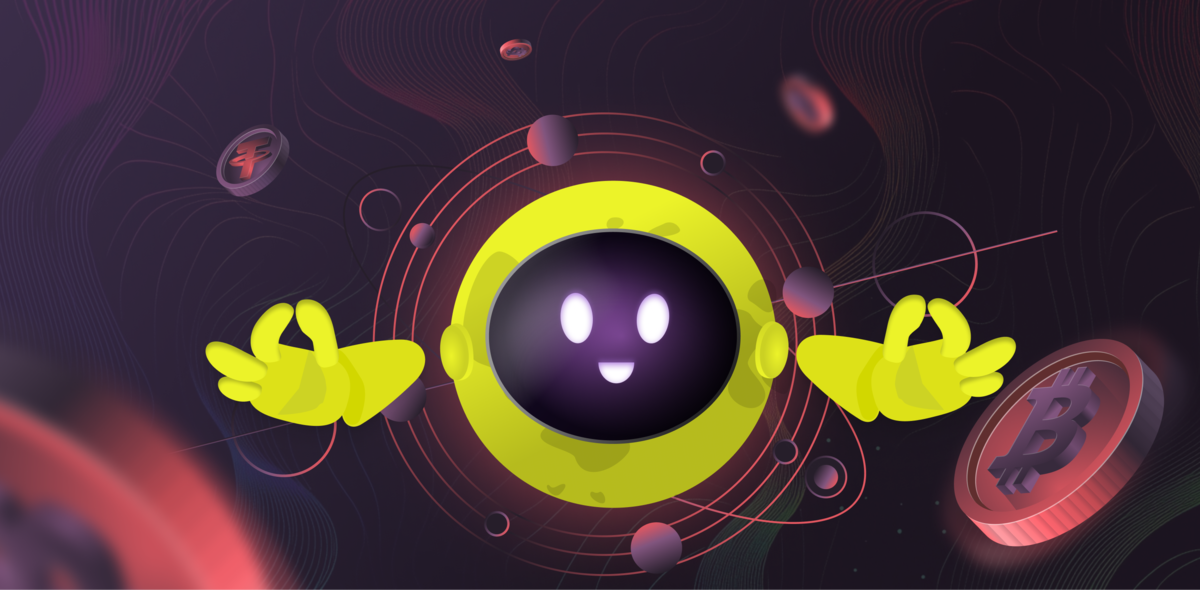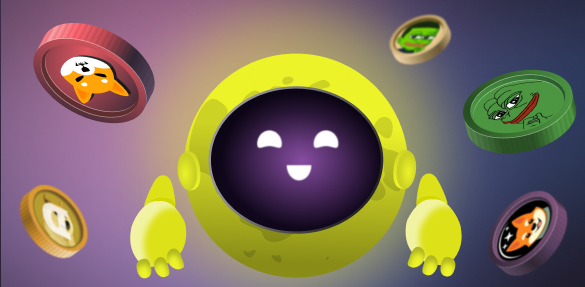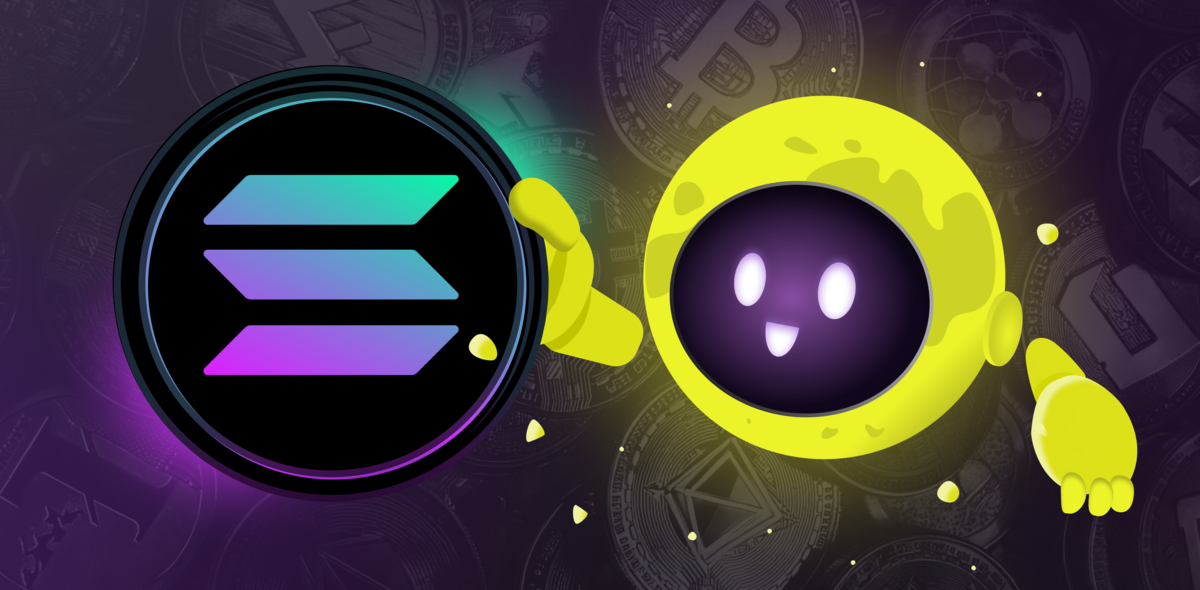
The crypto market changes constantly, and some assets rise above the rest every year. As 2025 began, investors started searching for the next crypto to explode—a project that promises massive gains like Bitcoin and Ethereum once delivered. But which tokens will dominate next, and how do we discover the real opportunities amid the hype?
We will explore a few of the most promising crypto projects, compare their potential, and try to foresee crypto's future in the next five years.
Which cryptocurrency will dominate next?
There are a few key factors that can help identify the next big crypto:
- Strong use case – Cryptos with real-world applications often succeed over time.
- Active development – Constant updates and improvements show commitment from the team.
- Community support – A strong, engaged user base drives adoption.
- Market demand – Projects solving real financial, gaming, or tech problems have long-term potential.
Potential cryptos to watch in 2025
1. Fetch.ai (FET)
Fetch.ai is a blockchain platform that uses AI to create smart digital agents. These agents can analyze data, predict trends, and make decisions independently. By automating tasks and reducing inefficiencies, Fetch.ai helps industries like supply chain management, finance, and smart cities work faster and smarter.
Unique features:
- Autonomous agents: AEAs can negotiate and execute complex transactions without human intervention. It makes supply chain management and decentralized finance (DeFi) more efficient.
- Open economic framework (OEF): Creates a decentralized environment for AEAs collaboration and efficient data exchange.
- Fetch.ai’s smart agents help businesses by managing logistics, handling contracts, and improving delivery routes. This reduces costs and makes supply chains more efficient.
Expert insight: Experts believe Fetch.ai’s mix of AI and blockchain creates practical solutions for real-world problems, positioning it as a top player in autonomous technology.
2. SingularityNET (AGIX)
SingularityNET is a decentralized AI marketplace. It allows developers to create, share, and monetize AI services. Blockchain guarantees transparency, security, and fair compensation for AI developers.
Unique features:
- AI marketplace: Allows smooth exchange of AI services, promoting innovation and collaboration among developers.
- AGI token: This is a native currency for transactions within the platform, ensuring a standardized and secure payment system.
Real-world application: Healthcare providers can access AI-powered diagnostic tools through SingularityNET, and use AGi tokens to pay for services. This way, developers get fair compensation, and users can enjoy affordable solutions.
Expert insight: Experts highlight SingularityNET's potential to democratize AI development. It can make advanced AI tools accessible to a broader audience and accelerate technological improvements.
3. Render Network (RNDR)
Render Network is a platform that connects people who need GPU power for rendering with those who have extra capacity. By using this network, GPU cloud rendering becomes more affordable and easier to access.
Unique features:
- Decentralized rendering: Artists, developers, and companies can use rendering services from a distributed network instead of relying on a single provider. This approach helps lower costs and boost efficiency.
- Tiered pricing system: Offers various service levels based on node operators' reputation available to customers with different budgets and quality requirements.
Real-world application: A game developer can use Render Network to render high-quality 3D graphics through decentralized GPU resources, paying with RNDR tokens, thus avoiding significant hardware investments.
Expert insight: Industry commentators see Render Network as an innovation in the GPU cloud computing sector. In particular, it benefits Web3 creators by providing scalable and affordable rendering options.
4. Arbitrum (ARB)
Arbitrum is a Layer 2 solution built for Ethereum, designed to make transactions faster and cheaper by moving most of the processing of the main Ethereum chain.
Unique features:
- Optimistic rollups: By grouping multiple transactions into one, improves efficiency and speed.
- Developer-friendly: Arbitrum supports existing Ethereum smart contracts, so developers can easily adopt and deploy their projects.
Real-world application: DeFi platforms can use Arbitrum to improve scalability and offer its users faster transaction times and lower fees.
Expert insight: Analysts agree that Arbitrum helps Ethereum scale, which is key for the future of decentralized apps.
5. Injective Protocol (INJ)
Injective Protocol is a decentralized exchange where you can trade advanced financial products like futures, perpetual swaps, and spot markets. It also uses AI to craft smarter trading strategies.
Unique features:
- Cross-chain compatibility: Supports trading across various blockchain networks, increasing liquidity and asset availability.
- Zero gas fees: As a layer-2 structure it offers no gas fees for more cost-effective trading.
Real-world application: Traders can access a lot of financial instruments on Injective Protocol without paying high fees and benefit from AI-driven analytics, building better trading strategies with its help.
Expert insight: Financial experts view Injective Protocol as a pioneer in decentralized finance that offers sophisticated trading options. It makes it a rival of traditional financial markets.
6. Kaspa (KAS)
Kaspa is a proof-of-work (PoW) blockchain network that uses a Directed Acyclic Graph (DAG)-based architecture. It offers a high throughput and fast confirmation times while does not compromise decentralization.
Unique features:
- BlockDAG: Allows the addition of multiple blocks simultaneously, increasing the network's speed and scalability.
- Instant confirmations: Fast transaction confirmations enhance user experience, making Kaspa practical for everyday transactions.
Real-world application: Kaspa's architecture allows the handling of high transaction volumes. It makes it suitable for the cases requiring fast and secure payment processing.
Expert insight: Blockchain researchers acknowledge Kaspa's innovative approach to scaling PoW networks. It will potentially address limitations faced by earlier cryptocurrencies like Bitcoin.
Final thoughts and market outlook
The crypto market in 2025 will be affected by AI integration and the expansion of DeFi. Scalability improvements will play an important role as well. Projects like Fetch.ai, SingularityNET, and Render Network, which focus on AI, are expected to grow a lot. Meanwhile, Ethereum will likely keep its strong position as the main platform for smart contracts. Plus, DeFi and Layer 2 solutions like Injective Protocol and Arbitrum are set to grow rapidly, helping to make blockchains work even better.
While no investment is guaranteed, these seven projects have strong fundamentals, real-world utility, and undeniable growth potential. Staying updated about market trends, technological advancements, and adoption rates will help make informed decisions.
Conclusion
The next big crypto explosion is likely to come from AI, DeFi, or scalability solutions. Fetch.ai, SingularityNET, Render Network, and Injective Protocol seem to be the most promising opportunities for 2025. The crypto market is full of opportunities—but also risks. Always research thoroughly and stay updated with market trends before investing.
FAQ
What is the next Bitcoin?
There may never be another Bitcoin, but Ethereum, Fetch.ai, and Kaspa are growing fast and steadily due to their innovations and adoption rates. They can potentially bring many gains to investors.
Which crypto will explode in 2025?
AI projects like SingularityNET and Fetch.ai, along with DeFi platforms like Injective Protocol, are set to grow a lot in 2025.
What is the cheapest cryptocurrency that will explode?
Kaspa (KAS) and Fetch.ai (FET) are the most affordable tokens on our list. Despite their relatively low price, those cryptos have a high growth potential this year.
What is the future of crypto in the next 5 years?
Experts foresee more AI-based automation and better blockchain scalability in the next few years. The market will also experience increased mainstream adoption of decentralized finance (DeFi) solutions.



